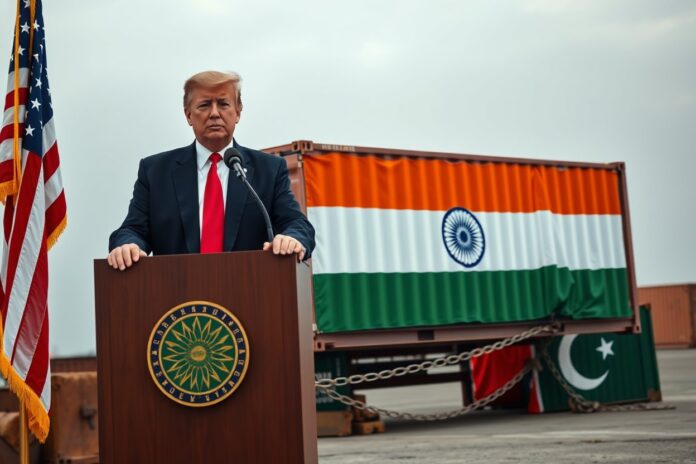Washington’s hardline trade posture
On July 30, 2025, U.S. President Donald Trump announced that Indian imports will be hit with a 25 % reciprocal tariff, effective August 7. This decision marks a firm escalation in U.S. trade policy toward India, following the breakdown of negotiations ahead of his August 1 deadline.
Trump justified the tariff citing India’s high tariffs, restrictive non‑monetary trade barriers, and continued defense and energy ties with Russia—labeling those ties part of “ALL THINGS NOT GOOD!”
India singled out
Unlike other major economies such as the EU and Japan, India did not receive a reduced rate in the final tariffs list. While the U.S. pared back duties for many nations, India’s 25% levy remains unchanged—indicating a particularly punitive stance. Officials also hinted at further unspecified penalties tied to India’s continued purchases of Russian crude and arms.
The move provoked sharp domestic backlash in India. Opposition parties condemned Prime Minister Modi’s government for failing to secure more favorable terms, calling the result a diplomatic failure. Analysts warned of potential economic damage, with possible GDP growth reduction of up to 40 basis points.
Bangladesh & Pakistan reap relief
In contrast to the India’s treatment, Bangladesh and Pakistan saw notable tariff reductions as part of ongoing trade negotiations with the U.S.:
Bangladesh’s reciprocal tariff fell from 35% to 20.
Pakistan’s rate dropped from 29% to 19%.
This differential treatment sets up a curious dynamic: while India faces a firm 25 % rate, its regional rivals gain more favorable access. The moves suggest Trump’s administration may be rewarding countries willing to engage on U.S. terms.
Market reaction and wider geopolitics
Markets in India reacted sharply: the rupee and equities dropped, while opposition voices intensified demand for parliamentary debates and greater foreign policy accountability from Modi’s administration.
Economists highlighted that the 25% tariff could undermine India’s ambitious manufacturing goals.
Crucially, this episode comes amid geopolitical friction—India’s refusal to distance itself from Russia presents a strategic impediment to deeper bilateral deals with Washington. With Washington offering better terms to countries it sees as aligning more closely, India’s independent foreign policy stance may be seen as a liability. Meanwhile, trade deals and energy collaborations with Pakistan created mistrust and resentment in New Delhi.
Looking ahead
India has reaffirmed its commitment to fair negotiations—but has drawn firm lines on key red zones like agriculture, public procurement, and national sovereignty.
Indian Commerce Minister Piyush Goyal responded strongly, dismissing Trump’s criticisms and vowing to protect farmers, MSMEs, and India’s global economic trajectory.
Meanwhile, Trump appears to be using tariff demands to pressure New Delhi into deeper sectoral concessions—including increased energy, defense, and nuclear imports from the U.S., though India resists some of those overtures.
(While it is based on accurate and up-to-date information from reliable sources like Reuters, Politico, and Indian Express, the writing, structure, and phrasing are entirely original by NewsRoom Staff)




